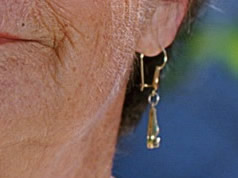In a world dominated by the intellectual and imaginal mind, the body can be shunted to the background as something that’s dumb, numb, inconvenient or untrustworthy. But, what if this is an illusion and the body is intelligent, responsive, and reliable? What if listening to the body could be a way to discover your deepest truth?
Like most people, you’re probably more familiar with your smart mind than your smart body. This leaves a whole bunch of valuable awareness on the table that inform your everyday life as well as your well-being. To access all of your resources, you’ll need to get out of your head and in to your body. Paying attention to the intricacies of what you see, hear, and smell is a good place to start. Including your body in the full scope of awareness forges a new perspective- a body- oriented perspective. Once you find the way and tune in, listening to the body is akin to learning a new language.
Your body communicates with sensation rather than actual words. Because it’s non-verbal, you’ll need your mind to help translate its straight-forward, symbolic communication. Let your mind be the astute observer and interpret what your body’s feeling. Often, if you’re patient and take the time to listen in, without prejudice, the words to describe your experience are body-centered and illuminating. Use your imagination and the richness of cultural experience to help connect the dots and find meaning. Remember, the body is both literal (the heart is the heart) and metaphorical (the heart represents love). Making your own connections will help you find the message and insights that are relevant to you.
In my body therapy practice, I use three exercises to help people listen to their body. With follow-up assignments to take home, these body-centered explorations offer simple ways to become familiar and comfortable with the sentient body. Designed for therapists, clients, and any interested reader, learning to pay attention and understand the unique ways the body communicates is the first step in a therapeutic conversation.
Exercise One: What does your internal dialogue tell you about your relationship with your body?
Take a moment right now and see where you stand with your body. Close your eyes and bring your awareness to your inner experience. Do you feel intimate, comfortable and confident in this physical space? Place a hand on your abdomen. Do you feel connected and loving? Or, are you distant, awkward, or judgmental? When you speak about your body, are your words respectful and generous? Are you as kind and loving to your own body as you would be with a dear friend?
Already have an account linked to your magazine subscription? Log in now to continue reading this article.
 (Need help? Click here or contact us to ask a question.)
(Need help? Click here or contact us to ask a question.)







